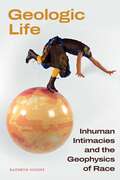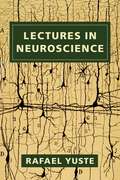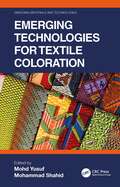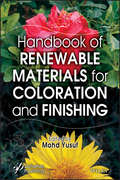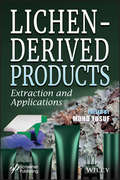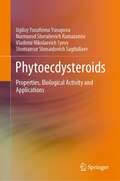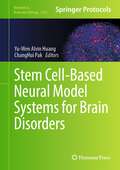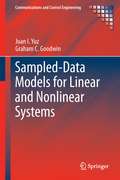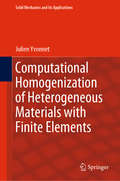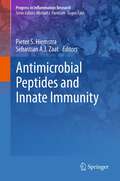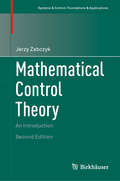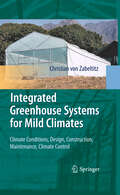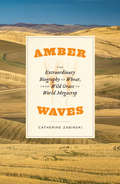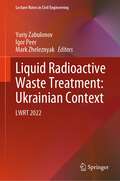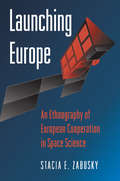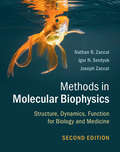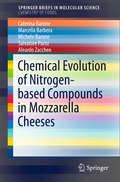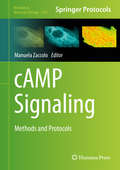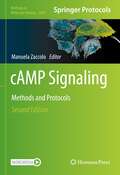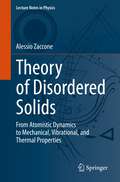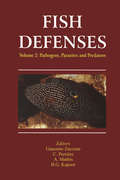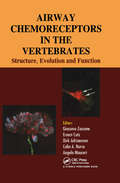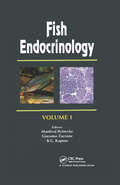- Table View
- List View
Geologic Life: Inhuman Intimacies and the Geophysics of Race
by Kathryn YusoffIn Geologic Life, Kathryn Yusoff theorizes the processes by which race and racialization emerged geologically. Examining both the history of geology as a discipline and ongoing mineral and resource extraction, Yusoff locates forms of imperial geology embedded in Western and Enlightenment thought and highlights how it creates anti-Black, anti-Indigenous, and anti-Brown environmental and racial injustices. Throughout, she outlines how the disciplines of geology and geography---and their conventions: surveying, identifying, classifying, valuing, and extracting—established and perpetuated colonial practices that ordered the world and people along a racial axis. Examining the conceptualization of the inhuman as political, geophysical, and paleontological, Yusoff unearths an apartheid of materiality as distinct geospatial forms. This colonial practice of geology organized and underpinned racialized accounts of space and time in ways that materially made Anthropocene Earth. At the same time, Yusoff turns to Caribbean, Indigenous, and Black thought to chart a parallel geologic epistemology of the "earth-bound" that challenges what and who the humanities have chosen to overlook in its stories of the earth. By reconsidering the material epistemologies of the earth as an on-going geotrauma in colonial afterlives, Yusoff demonstrates that race is as much a geological formation as a biological one.
Lectures in Neuroscience
by Rafael YusteThe human brain is perhaps the most intricate and fascinating object in the known universe. Through a mysterious process, the activity of billions of neurons within a few pounds of matter generates the unfathomable complexity of the mind.This book is a conversational and accessible introduction to the brain. Beginning from basic elements of neuroscience, the acclaimed scientist Rafael Yuste guides readers through increasingly sophisticated topics, developing a unified framework for how the brain functions. He describes how the brain is organized and how it develops, how neurons operate and form neural circuits, and how these circuits function as neural networks to generate behavior and mental states.Yuste challenges the traditional view that the brain is an input-output machine that reacts reflexively to sensory stimuli. Instead, he argues, the purpose of the brain is to make a predictive model of the world in order to anticipate the future and choose successful courses of action. He gives readers insight into the workings of sensory and motor systems and the neurobiological basis of our perceptions, thoughts, emotions, memories, and consciousness.Peppered with anecdotes and illustrated with elegant drawings and diagrams, this succinct and cohesive book is accessible to readers without previous background in the subject. It is written for anyone seeking to grasp the core principles of neuroscience or looking for a fresh and clear perspective on how the brain works.
Emerging Technologies for Textile Coloration (Emerging Materials and Technologies)
by Mohd YusufThis book features perspectives on advances in textile coloration technologies. It provides a comprehensive and holistic overview, supporting rapid and efficient entry of new researchers into emerging subjects within textile engineering and technology. FEATURES Introduces current, reliable coloration technologies Explains emerging coloration technologies from a multidisciplinary point of view Discusses future R&D opportunities Offers systematic, research-oriented outlines and observations and well-defined illustrative models and schemes Written for academicians, scientists, researchers, and advanced students of textile science and technology, Emerging Technologies for Textile Coloration aims to provide depth of understanding of both state-of-the-art and emergent topics and to spur further research leading to new opportunities and applications.
Handbook of Renewable Materials for Coloration and Finishing
by Mohd YusufThis unique handbook provides a vivid multidisciplinary dimension through technological perspectives to present cutting-edge research in the field of natural coloration and finishing. The 20 chapters are divided in to four parts: Substrates for coloration and finishing; renewable colorants and their applications; advanced materials and technologies for coloration and finishing; sustainability. Among the topics included in the Handbook of Renewable Materials for Coloration and Finishing are: The systematic discussion on the suitability, physical, chemical and processing aspects of substrates for coloration and finishing Bio-colorant’s application as photosensitizers for dye sensitized solar cells Animal based natural dyes Natural dyes extraction and dyeing methodology Application of natural dyes to cotton and jute textiles Sol-gel flame retardant and/or antimicrobial finishings for cellulosic textiles Rot resistance and antimicrobial finish of cotton khadi fabrics Advanced materials and technologies for antimicrobial finishing of cellulosic textiles
Lichen-Derived Products: Extraction and Applications
by Mohd YusufThe purpose of this book is to provide reference material that includes current developments along with a future outlook on the topic. It is divided into two sections; “Morphological Overview and Extraction Prospects” and “Trends and Applications”. Part I contains four chapters that provide an overview and systematically discuss the physical morphology, suitability and extraction aspects of lichens and their secondary metabolites. Part II includes eight chapters that give in-depth insights on recent and valuable applications of lichen and their obtained products in several applied sectors, including ethnopharmacology, therapeutics, paper and dye, nutraceuticals, cosmetics, herbal industries, etc.
Phytoecdysteroids: Properties, Biological Activity and Applications
by Ugiloy Yusufovna Yusupova Nurmurod Sheralievich Ramazonov Vladimir Nikolaevich Syrov Shomansur Shosaidovich SagdullaevThis book presents the results of comprehensive research of an inadequately studied class of secondary plant metabolites: phytoecdysteroids, which are structural analogs of the hormones of molting and metamorphosis of arthropods. The chemical structures of ecdysteroids isolated from plants of the genera Ajuga, Rhaponticum, and Silene have been established. Data on the physicochemical characteristics, reactivity, metabolism, and biological activity of these compounds are presented in this book. Considerations of the role of ecdysteroids in plants are expressed and data on their pharmacological properties are also given. Issues regarding the use of phytoecdysteroids in practical medicine and, accordingly, the technological aspects of deriving drugs on their basis and biologically active food additives of a fortifying type of action are considered as well.The book is intended for specialists in the fields of bioorganic and organic chemistry, biochemistry, biotechnology, and pharmacology. It is also relevant to scientists of various profiles and teachers and students interested in the problems of the chemistry of natural and physiologically active substances.
Stem Cell-Based Neural Model Systems for Brain Disorders (Methods in Molecular Biology #2683)
by Yu-Wen Alvin Huang ChangHui PakThis detailed volume presents validated and well-adapted procedures involving humanized and/or stem cell-based neural model systems that have proven helpful in better understanding the essential brain functions involved in the pathogenesis of brain disorders. The book explores the generation of multiple neural cell types in 2D and 3D as well as cutting-edge techniques to assay neural function. Written for the highly successful Methods in Molecular Biology series, chapters include introductions to their respective topics, lists of the necessary materials and reagents, step-by-step and readily reproducible laboratory protocols, and tips on troubleshooting and avoiding known pitfalls. Authoritative and practical, Stem Cell-Based Neural Model Systems for Brain Disorders serves as an essential resource for researchers and students in neuroscience, stem cell biology, and related fields.
Sampled-Data Models for Linear and Nonlinear Systems
by Juan I. Yuz Graham C. GoodwinSampled-data Models for Linear and Nonlinear Systems provides a fresh new look at a subject with which many researchers may think themselves familiar. Rather than emphasising the differences between sampled-data and continuous-time systems, the authors proceed from the premise that, with modern sampling rates being as high as they are, it is becoming more appropriate to emphasise connections and similarities. The text is driven by three motives: · the ubiquity of computers in modern control and signal-processing equipment means that sampling of systems that really evolve continuously is unavoidable; · although superficially straightforward, sampling can easily produce erroneous results when not treated properly; and · the need for a thorough understanding of many aspects of sampling among researchers and engineers dealing with applications to which they are central. The authors tackle many misconceptions which, although appearing reasonable at first sight, are in fact either partially or completely erroneous. They also deal with linear and nonlinear, deterministic and stochastic cases. The impact of the ideas presented on several standard problems in signals and systems is illustrated using a number of applications. Academic researchers and graduate students in systems, control and signal processing will find the ideas presented in Sampled-data Models for Linear and Nonlinear Systems to be a useful manual for dealing with sampled-data systems, clearing away mistaken ideas and bringing the subject thoroughly up to date. Researchers in statistics and economics will also derive benefit from the reworking of ideas relating a model derived from data sampling to an original continuous system.
Computational Homogenization of Heterogeneous Materials with Finite Elements (Solid Mechanics and Its Applications #258)
by Julien YvonnetThis monograph provides a concise overview of the main theoretical and numerical tools to solve homogenization problems in solids with finite elements. Starting from simple cases (linear thermal case) the problems are progressively complexified to finish with nonlinear problems. The book is not an overview of current research in that field, but a course book, and summarizes established knowledge in this area such that students or researchers who would like to start working on this subject will acquire the basics without any preliminary knowledge about homogenization. More specifically, the book is written with the objective of practical implementation of the methodologies in simple programs such as Matlab. The presentation is kept at a level where no deep mathematics are required.
Holographic Duality in Condensed Matter Physics
by Jan Zaanen Ya-Wen Sun Yan Liu Koenraad SchalmA pioneering treatise presenting how the new mathematical techniques of holographic duality unify seemingly unrelated fields of physics. This innovative development morphs quantum field theory, general relativity and the renormalisation group into a single computational framework and this book is the first to bring together a wide range of research in this rapidly developing field. Set within the context of condensed matter physics and using boxes highlighting the specific techniques required, it examines the holographic description of thermal properties of matter, Fermi liquids and superconductors, and hitherto unknown forms of macroscopically entangled quantum matter in terms of general relativity, stars and black holes. Showing that holographic duality can succeed where classic mathematical approaches fail, this text provides a thorough overview of this major breakthrough at the heart of modern physics. The inclusion of extensive introductory material using non-technical language and online Mathematica notebooks ensures the appeal to students and researchers alike.
Antimicrobial Peptides and Innate Immunity (Progress in Inflammation Research)
by Sebastian A. Zaat Pieter S. HiemstraAntimicrobial peptides have been the subject of intense research in the past decades, and are now considered as an essential part of the defense system in bacteria, plants, animals and humans. his book provides an update on these effector molecules of the innate immune system both for researchers who are already actively involved in the area, and for those with a general interest in the topic. The book starts with an overview of the evolution of cysteine-containing antimicrobial peptides (including defensins), and the role of these peptides in host defense in plants and micro-organisms. The realization that antimicrobial peptides also display functions distinct from their direct antimicrobial action is the focus of the next chapters, and puts these peptides center stage in immunity and wound repair. Further chapters discuss the role of antimicrobial peptides in disease, by providing an overview of mechanisms in bacterial resistance to antimicrobial peptides and a discussion of their role in inflammatory bowel disease, cystic fibrosis lung disease and chronic obstructive pulmonary disease. Finally, the book shows how knowledge of the function of antimicrobial peptides and their regulation can be used to design new therapies for inflammatory and infectious disorders. This is a very important area of research because of the increase in resistance of micro-organisms to conventional antibiotics. Therefore the use of synthetic or recombinant peptides, or agents that stimulate the endogenous production of antimicrobial peptides, provides an attractive alternative for conventional antibiotics.
Mathematical Control Theory: An Introduction (Systems & Control: Foundations & Applications)
by Jerzy ZabczykThis textbook presents, in a mathematically precise manner, a unified introduction to deterministic control theory. With the exception of a few more advanced concepts required for the final part of the book, the presentation requires only a knowledge of basic facts from linear algebra, differential equations, and calculus.In addition to classical concepts and ideas, the author covers the stabilization of nonlinear systems using topological methods, realization theory for nonlinear systems, impulsive control and positive systems, the control of rigid bodies, the stabilization of infinite dimensional systems, and the solution of minimum energy problems.This second edition includes new chapters that introduce a variety of topics, such as controllability with vanishing energy, boundary control systems, and delayed systems. With additional proofs, theorems, results, and a substantially larger index, this new edition will be an invaluable resource for students and researchers of control theory.Mathematical Control Theory: An Introduction will be ideal for a beginning graduate course in mathematical control theory, or for self-study by professionals needing a complete picture of the mathematical theory that underlies the applications of control theory.From reviews of the first edition:At last! We did need an introductory textbook on control which can be read, understood, and enjoyed by anyone. Gian-Carlo Rota, The Bulletin of Mathematics BooksIt covers a remarkable number of topics...The exposition is excellent, and the book is a joy to read. A novel one-semester course covering both linear and nonlinear systems could be given...The book is an excellent one for introducing a mathematician to control theory. Bulletin of the AMSIndeed, for mathematicians who look for the basic ideas or a general picture about the main branches of control theory, I believe this book can provide an excellent bridge to this area. IEEE Control Systems Magazine
Integrated Greenhouse Systems for Mild Climates
by Christian Von ZabeltitzCrop production in greenhouses is a growing industry, especially in mild climates, and is very important for the population as a source of income and clean, fresh food. Greenhouses create optimal climate conditions for crop growth and protect crops from outside pests. At the same time greenhouse production increases water use efficiency and makes integrated production and protection (IPP) possible. This book provides technical instructions for practice (what to do and what not to do) and gives answers to the question: How to produce more clean crops and better quality with less water, less land and less pesticide. Suitable greenhouse constructions and their design, adapted to local climates in subtropical, tropical and arid regions and infrastructure conditions are presented. The necessary climate control measures - light transmittance, ventilation, cooling, heating, and CO2 enrichment - and physical measures for pest control, as well as methods for using solar energy to desalinate salty water are described. The results of theoretical research are transferred into methods for practical use, so that readers are equipped to solve their problems in practice as well as to get stimulation for further research and development.
Power Plant Engineering
by Farshid ZabihianOur lives and the functioning of modern societies are intimately intertwined with electricity consumption. We owe our quality of life to electricity. However, the electricity generation industry is partly responsible for some of the most pressing challenges we currently face, including climate change and the pollution of natural environments, energy inequality, and energy insecurity. Maintaining our standard of living while addressing these problems is the ultimate challenge for the future of humanity. The objective of this book is to equip engineering and science students and professionals to tackle this task. Written by an expert with over 25 years of combined academic and industrial experience in the field, this comprehensive textbook covers both fossil fuels and renewable power generation technologies. For each topic, fundamental principles, historical backgrounds, and state-of-the-art technologies are covered. Conventional power production technologies, steam power plants, gas turbines, and combined cycle power plants are presented. For steam power plants, the historical background, thermodynamic principles, steam generators, combustion systems, emission reduction technologies, steam turbines, condensate-feedwater systems, and cooling systems are covered in separate chapters. Similarly, the historical background and thermodynamic principles of gas turbines, along with comprehensive discussions on compressors, combustors, and turbines, are presented and then followed with combined cycle power plants. The second half of the book deals with renewable energy sources, including solar photovoltaic systems, solar thermal power plants, wind turbines, ocean energy systems, and geothermal power plants. For each energy source, the available energy and its variations, historical background, operational principles, basic calculations, current and future technologies, and environmental impacts are presented. Finally, energy storage systems as required technologies to address the intermittent nature of renewable energy sources are covered. While the book has been written with the needs of undergraduate and graduate college students in mind, professionals interested in widening their understanding of the field can also benefit from it.
Amber Waves: The Extraordinary Biography of Wheat, from Wild Grass to World Megacrop
by Catherine ZabinskiA biography of a staple grain we often take for granted, exploring how wheat went from wild grass to a world-shaping crop. At breakfast tables and bakeries, we take for granted a grain that has made human civilization possible, a cereal whose humble origins belie its world-shaping power: wheat. Amber Waves tells the story of a group of grass species that first grew in scattered stands in the foothills of the Middle East until our ancestors discovered their value as a source of food. Over thousands of years, we moved their seeds to all but the polar regions of Earth, slowly cultivating what we now know as wheat, and in the process creating a world of cuisines that uses wheat seeds as a staple food. Wheat spread across the globe, but as ecologist Catherine Zabinski shows us, a biography of wheat is not only the story of how plants ensure their own success: from the earliest bread to the most mouthwatering pasta, it is also a story of human ingenuity in producing enough food for ourselves and our communities. Since the first harvest of the ancient grain, we have perfected our farming systems to grow massive quantities of food, producing one of our species’ global mega crops—but at a great cost to ecological systems. And despite our vast capacity to grow food, we face problems with undernourishment both close to home and around the world. Weaving together history, evolution, and ecology, Zabinski’s tale explores much more than the wild roots and rise of a now-ubiquitous grain: it illuminates our complex relationship with our crops, both how we have transformed the plant species we use as food, and how our society—our culture—has changed in response to the need to secure food sources. From the origins of agriculture to gluten sensitivities, from our first selection of the largest seeds from wheat’s wild progenitors to the sequencing of the wheat genome and genetic engineering, Amber Waves sheds new light on how we grow the food that sustains so much human life.
Liquid Radioactive Waste Treatment: LWRT 2022 (Lecture Notes in Civil Engineering #469)
by Yuriy Zabulonov Igor Peer Mark ZheleznyakThis book presents the latest scientific advancements and innovative R&D solutions for the treatment of liquid radioactive waste in the context of practical threats in Ukraine. It includes research and engineering insights from the International Conference “Liquid Radioactive Waste Treatment: Ukrainian Context” (LWRT 2022), which was held in Kyiv, Ukraine on June 30, 2022. This publication covers a wide range of topics related to the treatment and management of radioactive waste, with a particular emphasis on safety considerations. The included articles also explore various aspects of environmental engineering and innovative R&D solutions, as well as the sustainability challenges associated with radioactive waste in the context of postwar reconstruction efforts. The contributions featured in this publication were selected through a rigorous international peer-review process. The carefully curated collection of articles showcases a diverse range of exciting ideas, poised to inspire novel research directions and stimulate interdisciplinary collaborations.
Launching Europe: An Ethnography of European Cooperation in Space Science
by Stacia E. ZabuskyIn this first ethnographic study of the European Space Agency, Stacia Zabusky explores the complex processes involved in cooperation on space science missions in the contemporary context of European integration. Zabusky argues that the practice of cooperation does not depend on a homogenizing of interests in a bland unity. Instead, it consists of ongoing negotiation of and conflict over often irreconcilable differences. In this case, those differences are put into play by both technical and political divisions of labor (in particular, those of big science and of European integration). Zabusky shows how participants on space science missions make use of these differences, particularly those manifest in identities of work and of nationality, as they struggle together not only to produce space satellites but also to create European integration. She argues that the dialectical processes of production include and depend on conflict and contradiction to maintain energy and excitement and thus to be successful. Participants in these processes are not, however, working only to produce tangible success. In her epilogue, Zabusky argues that European space science missions can be interpreted as sacred journeys undertaken collectively, and that these journeys are part of a fundamental cultural project of modernity: the legitimation of and aspiration for purity. She suggests, finally, that this project characterizes not only the institution of technoscience but those of bureaucracy and nationalism as well.
Methods in Molecular Biophysics (2nd Edition): Structure, Dynamics, Function for Biology and Medicine
by Joseph Zaccai Nathan Zaccai Igor SerdyukOur knowledge of biological macromolecules and their interactions is based on the application of physical methods, ranging from classical thermodynamics to recently developed techniques for the detection and manipulation of single molecules. These methods, which include mass spectrometry, hydrodynamics, microscopy, diffraction and crystallography, electron microscopy, molecular dynamics simulations, and nuclear magnetic resonance, are complementary; each has its specific advantages and limitations. <P><P>Organised by method, this textbook provides descriptions and examples of applications for the key physical methods in modern biology. It is an invaluable resource for undergraduate and graduate students of molecular biophysics in science and medical schools, as well as research scientists looking for an introduction to techniques beyond their specialty. As appropriate for this interdisciplinary field, the book includes short asides to explain physics aspects to biologists and biology aspects to physicists.
Chemical Evolution of Nitrogen-based Compounds in Mozzarella Cheeses (SpringerBriefs in Molecular Science)
by Aleardo Zaccheo Salvatore Parisi Michele Barone Marcella Barbera Caterina BaroneThis Brief evaluates the consequences of protein modifications in cheeses, with special emphasis on mozzarella cheeses. It explains the influence of biogenic amines on food quality and safety. As certain biogenic amines display a toxic potential to humans, considerable research has been undertaken in recent years to evaluate their presence in fermented foods, such as cheeses. This Brief summarizes how the presence of amines is influenced by different factors such as cheese variety, seasoning and microflora. The authors compare typical profiles of different products, e.g. ripe vs. unripe cheeses, focusing also on the different types of mozzarella cheeses. The Brief also introduces several analytical methods and simulation techniques, which are being used to evaluate the evolutive profiles of different selected molecules, protein aggregation, or proteolysis.
cAMP Signaling: Methods and Protocols (Methods in Molecular Biology #1294)
by Manuela ZaccoloThis detailed volume encompasses new technological developments that specifically address questions related to adenosine 3′,5′-monophosphate (cAMP) compartmentalization, that probe relevant protein-protein interactions, that increase the spatial and temporal resolution of cAMP signal detection, and that can facilitate integration of the mounting complexity of the information that is becoming available on this signaling system. cAMP, the prototypical intracellular second messenger, regulates a large variety of cellular functions and biological processes, including gene transcription, cell metabolism, proliferation, development, as well as more specialized functions depending on the cell type, so the realization of its extremely complex spatial organization and local regulation is providing novel mechanistic insight into cell physiology and is producing a novel framework for the identification of disease mechanisms. Written in the highly successful Methods in Molecular Biology series format, chapters include introduction to their respective topics, lists of the necessary materials and reagents, step-by-step, readily reproducible laboratory protocols, and tips on troubleshooting and avoiding known pitfalls. Practical and authoritative, cAMP Signaling: Methods and Protocols serves as a vital resource for researchers working in this expanding, complex field.
cAMP Signaling: Methods and Protocols (Methods in Molecular Biology #2483)
by Manuela ZaccoloThis volume discusses the latest techniques used by researchers to measure cAMP activity at the cell population, whole cell, and subcellular level. The techniques covered in the book address questions related to cAMP compartmentalization, which look at relevant protein-protein interactions that increase the spatial and temporal resolution of cAMP signals detection, and that can help in the integration of the increasingly complex information that is becoming available in this field. Written in the highly successful Methods in Molecular Biology series format, chapters include introductions to their respective topics, lists of the necessary materials and reagents, step-by-step, readily reproducible laboratory protocols, and tips on troubleshooting and avoiding known pitfalls. Cutting-edge and comprehensive, cAMP Signaling: Methods and Protocols, Second Edition is a valuable resource for scientists and researchers who are interested in learning more about this important and developing field. Chapter 7 is available open access under a Creative Commons Attribution 4.0 International License via link.springer.com.
Theory of Disordered Solids: From Atomistic Dynamics to Mechanical, Vibrational, and Thermal Properties (Lecture Notes in Physics #1015)
by Alessio ZacconeThis book presents a consistent mathematical theory of the non-electronic physical properties of disordered and amorphous solids, starting from the atomic-level dynamics and leading to experimentally verifiable descriptions of macroscopic properties such as elastic and viscoelastic moduli, plasticity, phonons and vibrational spectra, and thermal properties. This theory begins with the assumption of the undeniable existence of an “amorphous lattice”, which allows one to relegate the theoretical uncertainties about the ultimate nature of the glass transition to a subsidiary role and thus take a more pragmatic approach towards the modelling of physical properties. The book introduces the reader not only to the subtle physical concepts underlying the dynamics, mechanics, and statistical physics of glasses and amorphous solids, but also to the essential mathematical and numerical methods that cannot be readily gleaned from specialized literature since they are spread out among many often technically demanding papers. These methods are presented in this book in such a way as to be sufficiently general, allowing for the mathematical or numerical description of novel physical phenomena observed in many different types of amorphous solids (including soft and granular systems), regardless of the atomistic details and particular chemistry of the material. This monograph is aimed at researchers and graduate-level students in physics, materials science, physical chemistry and engineering working in the areas of amorphous materials, soft matter and granular systems, statistical physics, continuum mechanics, plasticity, and solid mechanics. It is also particularly well suited to those working on molecular dynamics simulations, molecular coarse-grained simulations, as well as ab initio atomistic and DFT methods for solid-state and materials science.
Fish Defenses Vol. 2: Pathogens, Parasites and Predators
by Giacomo ZacconeDramatic changes in the environment, including habitat degradation and climate change, have focused attention on how individuals and populations respond to a shifting biotic and abiotic landscape. A critical step toward meeting this goal is a clear understanding of the capacity of individuals to defend themselves against threats. Changes in water q
Airway Chemoreceptors in Vertebrates
by Giacomo Zaccone Ernest Cutz Dirk Adriaensen Colin A. Nurse Angela MauceriThis book provides a comprehensive and up-to-date account of the information available on the morphological, physiological and evolutionary aspects of specialized cells distributed within the epithelia of the airways in the vertebrates. A lot of work has been done on the cell and molecular biology of these cells which are regarded as as oxygen receptor neuroepithelial cells. These chemoreceptors which were conserved throughout evolution have neuroendocrine functions carrying their signals to the central nervous system. The chemoreceptor cells are sensors which detect the signal changes in the external and internal environments, and play a key role in the survival of various species. Studies addressed to the chemoreceptor cell systems in the airways are of great importance for investigating their response to changes in the oxygen and carbon dioxide concentrations in the environment since the future of the planet earth is being threatened by global warming and climate change. Praise for the book: ...This volume would be of special interest to researchers who are curious about the evolution of vertebrate respiratory control in general and the regulation of ventilation in nonmammalian vertebrates in particular. -Wayne L. Silver, Wake Forest University, in The Quarterly Review of Biology, Volume 85, Number 2
Fish Endocrinology (2 Vols.)
by Giacomo Zaccone B. G. Kapoor Manfred ReineckeDuring the past two decades, fish endocrinology has witnessed exciting developments due to our increased knowledge at all levels of biological organizations, including molecular biology, cell biology, physiology and behavior. New insights into development, neurobiology, immunology and molecular genetics closely correlated with classical aspects of
